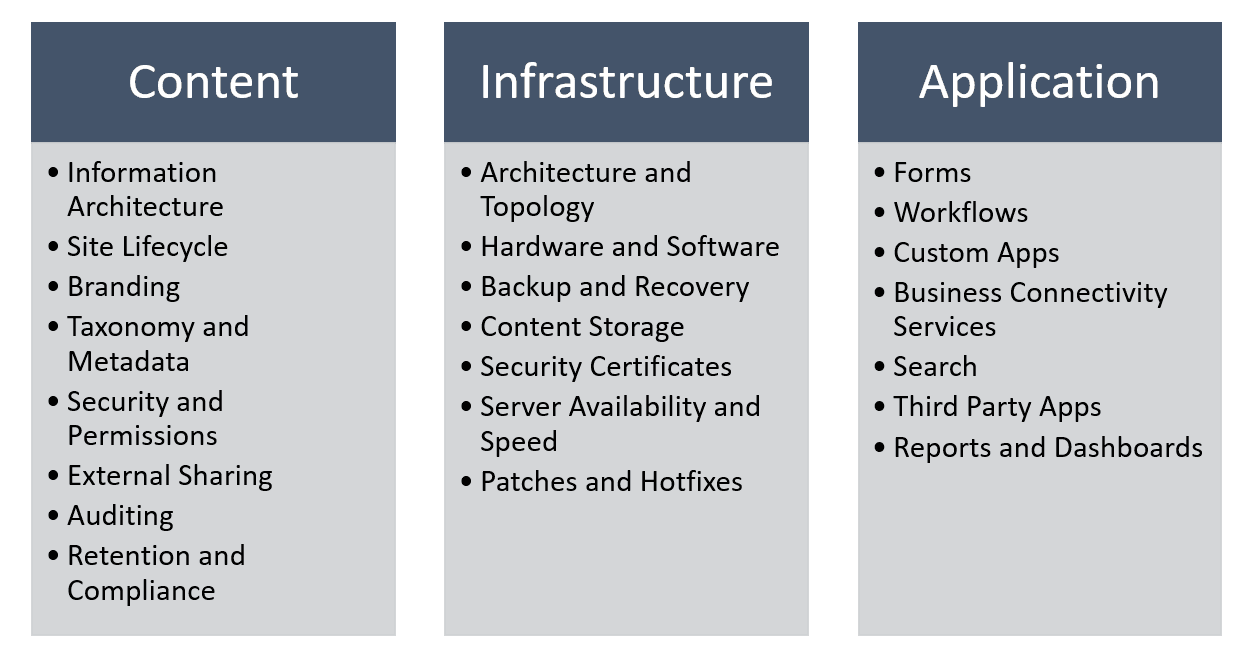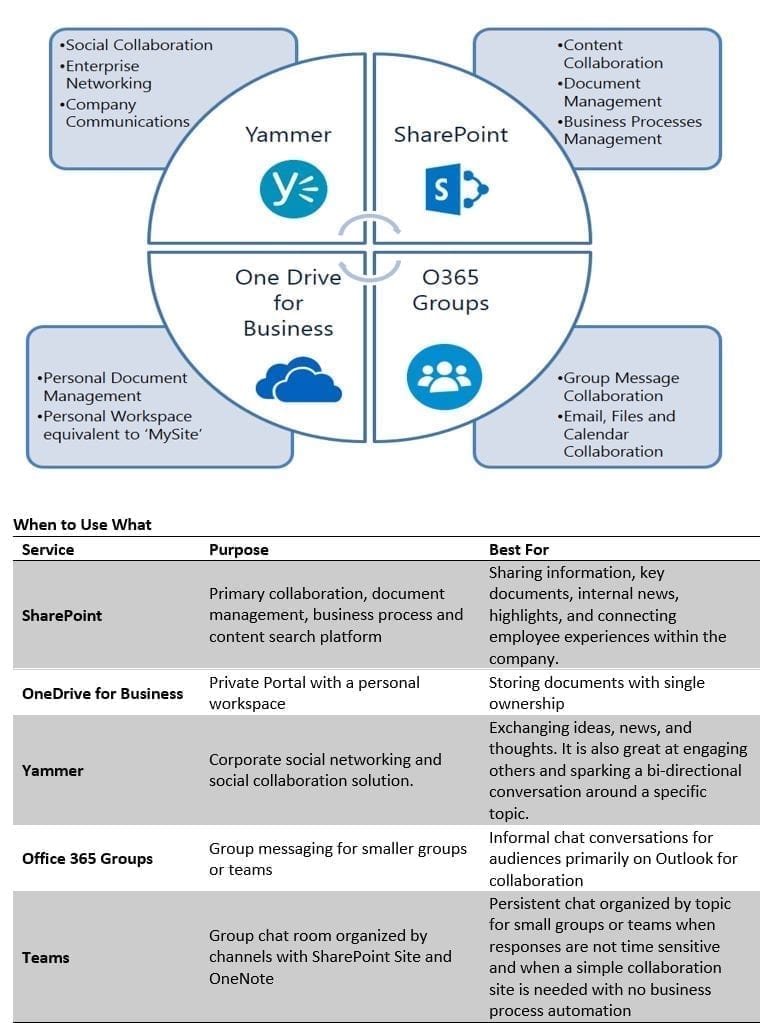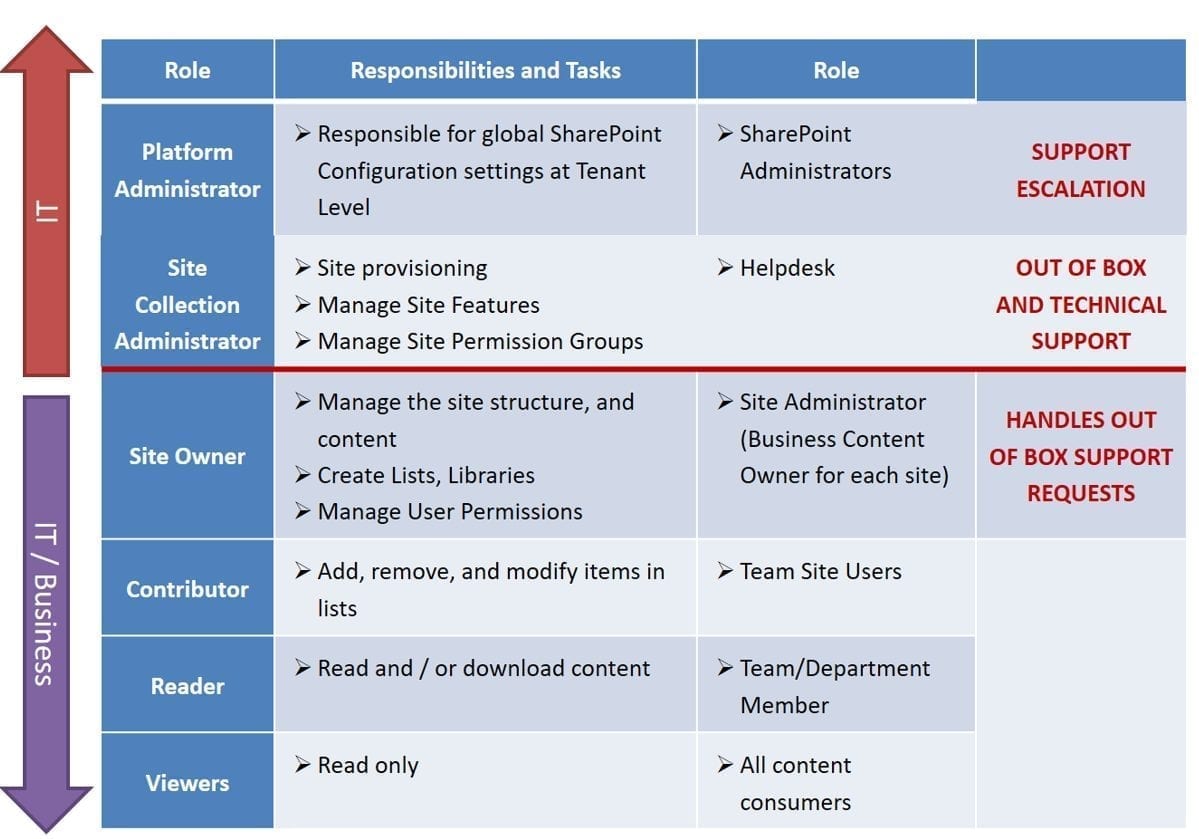
The Building Blocks of a SharePoint Governance Plan
Establishing and enforcing SharePoint Governance is complex, especially with Cloud and external access components. SharePoint, a key collaboration and content management platform for many organizations, offers various capabilities, including:
- Discovering, sharing, and managing content securely within the organization and externally with partners and customers, accessible across any device from anywhere.
- Managing team and project activities through shared calendars, capturing project milestones, contact lists, and other relevant data.
- Connecting with experts, discovering insights, and previewing search results to find relevant answers quickly with powerful metadata-driven search results.
The Importance of SharePoint Governance
Many organizations invest significant time and effort in setting up their SharePoint environment, making it available to their teams, customizing it to meet unique needs, and performing routine maintenance activities. However, governance around content, security, and usage often gets neglected. An unmanaged SharePoint environment, especially SharePoint Online within Office 365, can lead to uncontrolled content sprawl, ownership confusion, and security issues.
Establishing and enforcing SharePoint governance is crucial. A solid Governance Plan, along with a governing body and set of procedures, is essential to encourage and enforce policies and standards. An effective Governance Plan documents policies and guidelines around content, storage, security, and performance, providing structure and guidance to business and IT operations. It ensures the environment is managed and used as intended.
In this article, we’re providing an overview of a “standard” governance plan, specific to SharePoint Online, that is divided into three main areas as shown below:

Key Components of a SharePoint Governance Plan
1. Content Governance
The collaboration capabilities of SharePoint Online are also available in other Office 365 services. The image below is an overview of these other collaboration services and when SharePoint is best suited and should be recommended:

Your organization’s Governance Plan should define the acceptable usage of SharePoint and other online services, along with a logical architecture of the content for different business lines and functional units.
For effective Site Provisioning, organizations must clearly define processes for SharePoint Sites included with Office 365 Groups and Teams, Project Online Sites, and SharePoint Classic Team Sites, while also documenting procedures for site ownership, maintenance, monitoring, and site deletion. Additionally, it is crucial to establish comprehensive policies around security, external sharing, site size, folders vs. metadata, branding, and taxonomy to ensure the integrity and usability of the SharePoint environment.
The table below provides an example of a Security and Permissions governance model:

2. Infrastructure Governance
For organizations utilizing an on-premise or hybrid infrastructure, governance policies for the infrastructure should be clearly defined.
3. Application Governance
- InfoPath Forms: Develop a roadmap for phasing out InfoPath Forms, converting them into PowerApps or third-party solutions like Nintex.
- PowerApps and Office 365 Forms: Use PowerApps for custom SharePoint lists requiring basic forms with business rules. Office 365 Forms are suitable for surveys and quizzes.
- Third-Party Forms: Consider third-party solutions for complex requirements.
- Workflows: Select workflow tools based on requirements complexity and business needs. Document policies for using SharePoint Designer Workflows, Microsoft Flow, and Nintex Workflow.
- Custom Apps: Define requirements for custom apps through a formal project request process.
- Business Connectivity Services: Document authorized data sources for setting up external content types.
- Search: Develop a plan for using Out-of-the-Box Search in Office 365 versus hybrid search.
- Third-Party Apps: Evaluate and test third-party tools before use in SharePoint Online.
- Reports and Dashboards: Define policies for using Excel Reporting and PowerBI.
User Adoption and Training
Increase user adoption by implementing strategies such as:
- Quarterly lunch and learn sessions with SharePoint tips.
- Newsletters with ‘how-to’ links and training videos.
- Yammer Groups with adoption quick tips.
- Regular engagement with site users to identify areas for improvement.
Establishing a Governance Committee
Establish a Governance Committee with members representing different departments, such as IT, Security, and Legal. The committee’s main role is to ensure and enforce compliance with information governance policies. Responsibilities include reviewing external content sharing, retention policies, and external sharing activity reports. The committee also liaises with content owners to ensure the validity of external accounts and security compliance.
About Optimum: Governance Consulting and Strategic Process Optimization
Optimum is a nationally recognized IT consulting firm dedicated to delivering governance advisory services aimed at ensuring security, compliance, and organizational efficiency.
We specialize in SharePoint and Office 365 governance consulting, providing custom strategies and processes for content creation, distribution, administration, and maintenance. This ensures secure and accessible company information, minimizes operational costs, enables easy search and retrieval of information, and ensures compliance with regulations.
Reach out today for a complimentary discovery session, and let’s explore the best governance solution for your needs!
Contact us: info@optimumcs.com | 713.505.0300 | www.optimumcs.com
